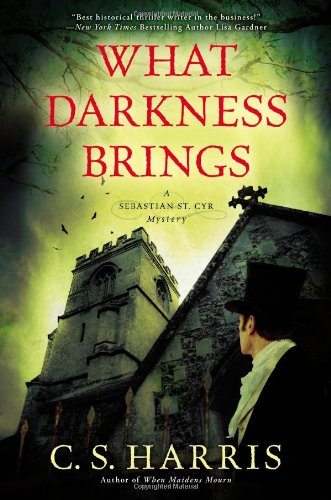 What Darkness Brings (Sebastian St. Cyr, #8) by C.S. Harris
What Darkness Brings (Sebastian St. Cyr, #8) by C.S. Harris Format: eARC
Source: supplied by publisher via NetGalley
Formats available: hardcover, paperback, ebook, audiobook
Genres: historical fiction, historical mystery, mystery
Series: Sebastian St. Cyr #8
Pages: 349
Published by New American Library, Berkley on March 5, 2013
Purchasing Info: Author's Website, Publisher's Website, Amazon, Barnes & Noble, Kobo, Bookshop.org, Better World Books
Goodreads
London, September 1812. After a long night spent dealing with the tragic death of a former military comrade, a heart-sick Sebastian learns of a new calamity: Russell Yates, the dashing, one-time privateer who married Sebastian’s former lover Kat Boleyn a year ago, has been found standing over the corpse of notorious London diamond merchant Benjamin Eisler. Yates insists he is innocent, but he will surely hang unless Sebastian can unmask the real killer. For the sake of Kat, the woman he once loved and lost, Sebastian plunges into a treacherous circle of intrigue. Although Eisler’s clients included the Prince Regent and the Emperor Napoleon, he was a despicable man with many enemies and a number of dangerous, well-kept secrets—including a passion for arcane texts and black magic. Central to the case is a magnificent blue diamond, believed to have once formed part of the French crown jewels, which disappeared on the night of Eisler’s death. As Sebastian traces the diamond’s ownership, he uncovers links that implicate an eccentric, powerful financier named Hope and stretch back into the darkest days of the French Revolution. When the killer grows ever more desperate and vicious, Sebastian finds his new marriage to Hero tested by the shadows of his first love, especially when he begins to suspect that Kat is keeping secrets of her own. And as matters rise to a crisis, Sebastian must face a bitter truth--that he has been less than open with the fearless woman who is now his wife.
My Review:
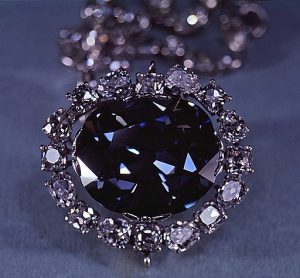
The Hope Diamond, the very real, very beautiful and very large Hope Diamond, is currently owned by the Smithsonian Museum and housed in the Smithsonian National Museum of Natural History.
Once upon a time, the Hope Diamond was just a bit bigger than the 45.52 carats it is today and was part of the Crown Jewels of France. Then there was that little historical incident known as the French Revolution, and the Crown Jewels were first put on display and then stolen in 1792.
At which point it disappeared from history, only to reappear in its current size and setting in 1839 as the Hope Diamond in a gem catalog from the banking family of that name.
So where did it go between 1792 and 1839? It’s not exactly the kind of thing that a person could hawk on a street corner – or even take to the usual dealers in stolen goods. Because of its unusual color, it was too easy to trace – even after cutting it down from its original OMG 115 carats to the (still OMG) 67.125 carat gem that was part of the French Crown Jewels.
When the noted art collector, diamond merchant, high-priced pawnbroker and all-around thoroughly disgusting example of humanity Daniel Eisler is killed in his own front parlor, it’s not a case that would normally involve Sebastian St. Cyr, Viscount Devlin. But the man accused of the murder is dear to a woman Devlin once loved. She claims her husband is innocent – of that crime at least.
Devlin agrees to look into the killing, as it’s pretty obvious that whatever else is going on, there’s been somewhat of a rush to judgment, to the point where it looks like a fix is in. A fix that has tentacles that reach all the way up to the highest powers in that land – whether one defines those high and mighty powers as the Prince Regent or Devlin’s father-in-law, the power behind Prinny’s shaky throne.
At first, it doesn’t seem possible that the famous blue diamond could have anything to do with the death of a dealer whose hands it may have passed through, once upon a time. After all, Daniel Eisler – at least in his fictional incarnation – is such a thoroughgoing bastard that most who hear of his death consider it an improvement to humanity as a whole.
(Daniel Eisler was based on a real person, Daniel Eliason, who really does occupy a place in the history of the Hope Diamond at the time this story takes place. However, the real person does not seem to have been anything like as poor an excuse for a human being as his fictional counterpart.)
But the deeper Devlin digs, the more the diamond – and the agents of Napoleon still hunting it after twenty years – appears to be at the center of a case that otherwise gets darker and murkier as it goes.
Revealing secrets and lies that have lurked in the shadows of the seemingly war with France – and have the potential to rock Prinny’s unstable Regency to its foundations.
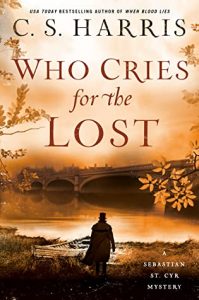 Escape Rating A: It’s not much of a surprise that after Tuesday’s book reminded me SO MUCH of St. Cyr that I would be hearing the siren song of the next book in my catch-up read of the series. I kind of wish I’d listened to that voice a bit more readily, as once I started What Darkness Brings I fell right into it with a grateful sigh.
Escape Rating A: It’s not much of a surprise that after Tuesday’s book reminded me SO MUCH of St. Cyr that I would be hearing the siren song of the next book in my catch-up read of the series. I kind of wish I’d listened to that voice a bit more readily, as once I started What Darkness Brings I fell right into it with a grateful sigh.
One of the things that I’ve loved about this series is the way that it blends real historical events and figures with a story that often feels “ripped from the headlines” of its own era’s newspapers and gutter press.
Nearly all the history of the Hope Diamond and the French Blue diamond from which it was cut really happened – especially the truly wild bits about the original theft. The speculation about why that theft occurred and just how it got to England are not just plausible but have been looked into as possibilities over the centuries. One part of that speculation and conjecture in Devlin’s time, however, has been verified. In 2005, when scientific testing confirmed that the Hope Diamond was, in fact, cut from the gem in the French Crown Jewels.
At first, I didn’t think the plots in this entry in the series were going to reach nearly as high as they did, but once you read even a bit of the true history and the conjectures that surround it, it made sense that it turned out the way it did.
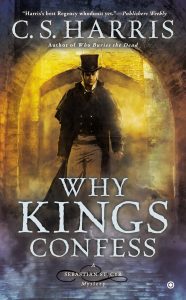 The way the murder, the theft plot and the real history branched and intertwined made this entry in the series one hell of a wild ride, while still tying up loose ends from previous entries and opening up entirely new fields of questions for future books in the series – some of which have admittedly been answered by the point where the series as a whole rests – hopefully temporarily – after Who Cries for the Lost closed its own set of doors and opened yet more to keep us all on pins and needles until the next entry in the series.
The way the murder, the theft plot and the real history branched and intertwined made this entry in the series one hell of a wild ride, while still tying up loose ends from previous entries and opening up entirely new fields of questions for future books in the series – some of which have admittedly been answered by the point where the series as a whole rests – hopefully temporarily – after Who Cries for the Lost closed its own set of doors and opened yet more to keep us all on pins and needles until the next entry in the series.
Next up in my catching up/filling in read of the St. Cyr series will be Why Kings Confess. And I confess that I’ll be picking that up the next time I’m looking for a comfort read, or guaranteed competence porn, or just have the urge to see what I missed with these marvelous characters!

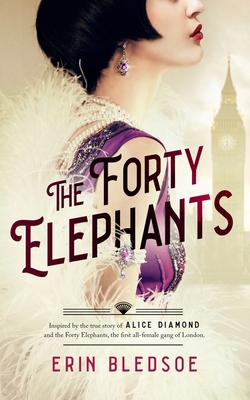
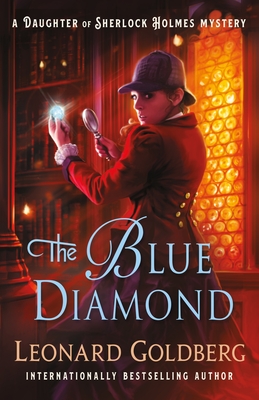
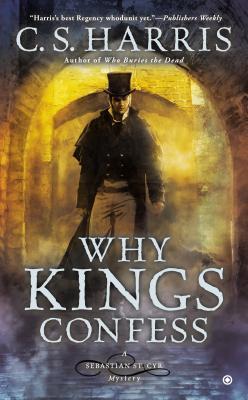





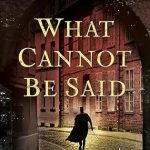
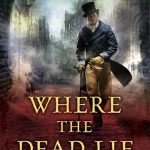










I like the story and especially the period setting.